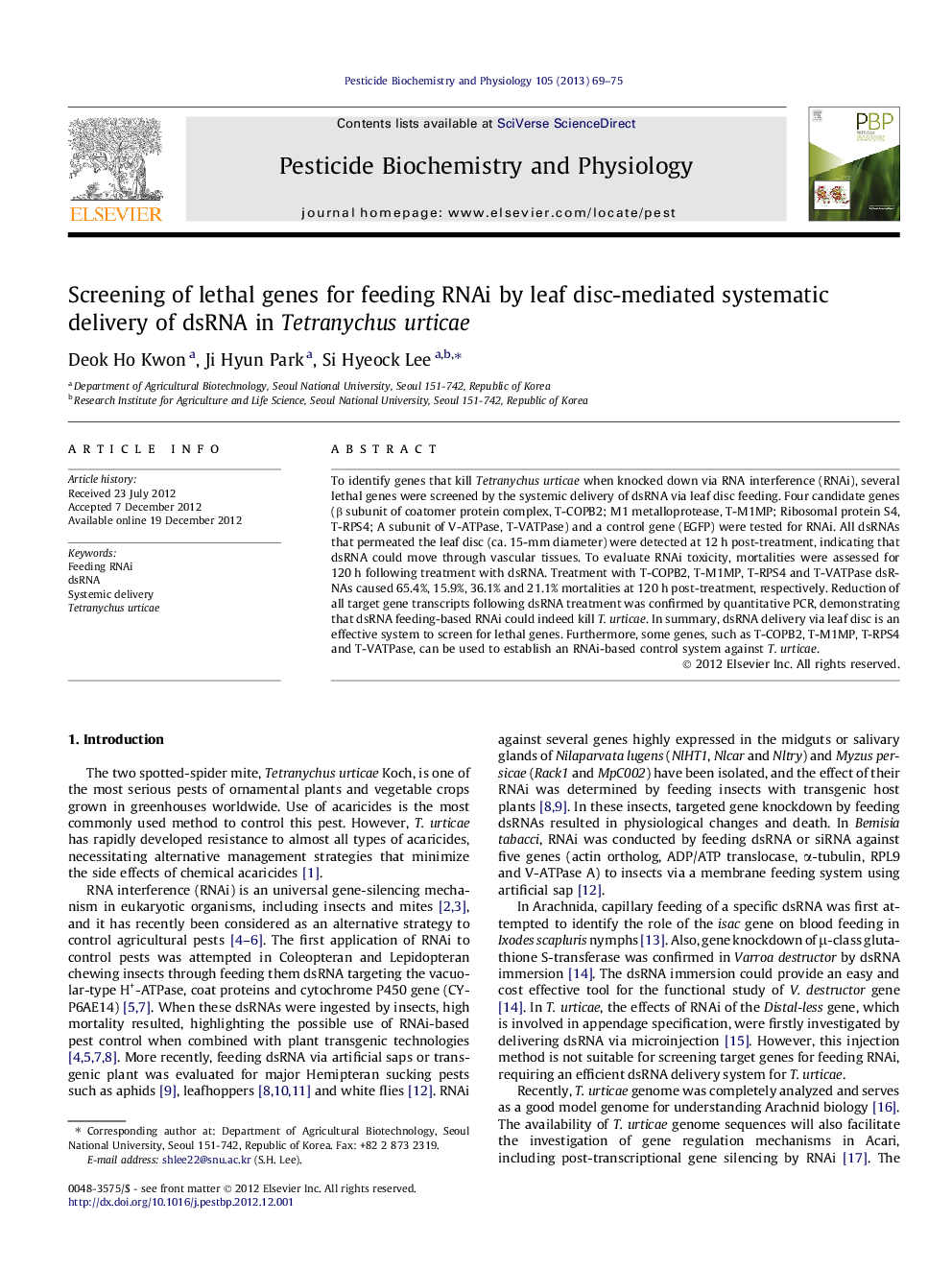| Article ID | Journal | Published Year | Pages | File Type |
|---|---|---|---|---|
| 2009514 | Pesticide Biochemistry and Physiology | 2013 | 7 Pages |
To identify genes that kill Tetranychus urticae when knocked down via RNA interference (RNAi), several lethal genes were screened by the systemic delivery of dsRNA via leaf disc feeding. Four candidate genes (β subunit of coatomer protein complex, T-COPB2; M1 metalloprotease, T-M1MP; Ribosomal protein S4, T-RPS4; A subunit of V-ATPase, T-VATPase) and a control gene (EGFP) were tested for RNAi. All dsRNAs that permeated the leaf disc (ca. 15-mm diameter) were detected at 12 h post-treatment, indicating that dsRNA could move through vascular tissues. To evaluate RNAi toxicity, mortalities were assessed for 120 h following treatment with dsRNA. Treatment with T-COPB2, T-M1MP, T-RPS4 and T-VATPase dsRNAs caused 65.4%, 15.9%, 36.1% and 21.1% mortalities at 120 h post-treatment, respectively. Reduction of all target gene transcripts following dsRNA treatment was confirmed by quantitative PCR, demonstrating that dsRNA feeding-based RNAi could indeed kill T. urticae. In summary, dsRNA delivery via leaf disc is an effective system to screen for lethal genes. Furthermore, some genes, such as T-COPB2, T-M1MP, T-RPS4 and T-VATPase, can be used to establish an RNAi-based control system against T. urticae.
Graphical abstractFigure optionsDownload full-size imageDownload as PowerPoint slideHighlights► RNAi-based on systemic delivery of dsRNA via leaf disc feeding was tested for Tetranychus urticae. ► Feeding T-COPB2 dsRNA caused the highest mortality among four candidate dsRNAs. ► Feeding dsRNA via leaf disc can be used to screen lethal genes for RNAi against T. urticae.
